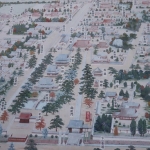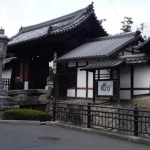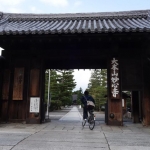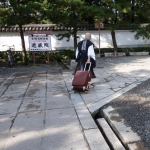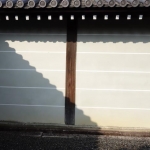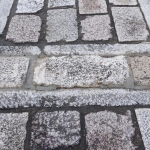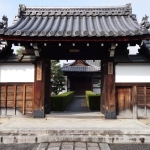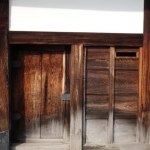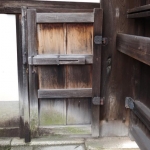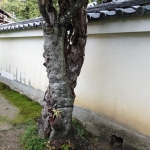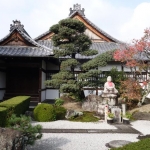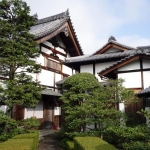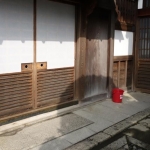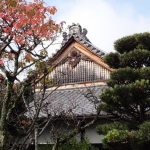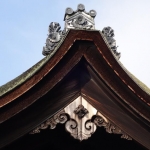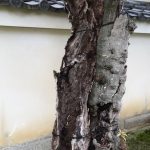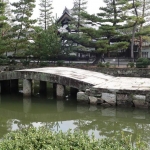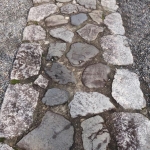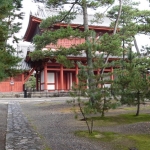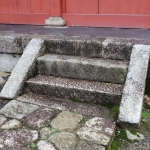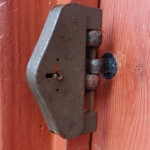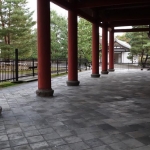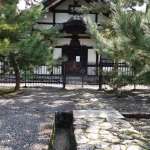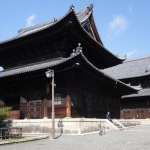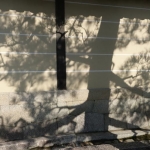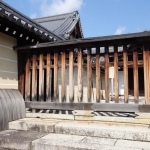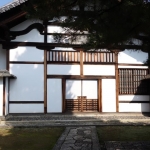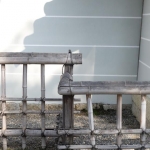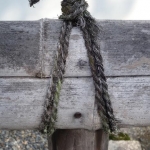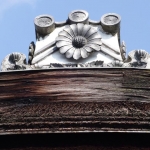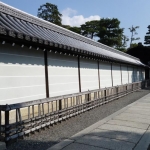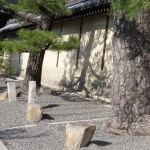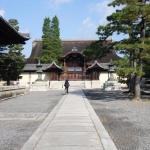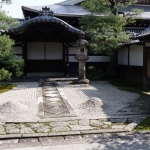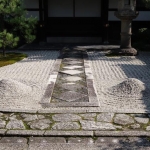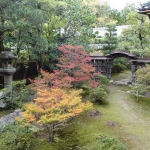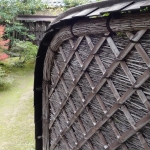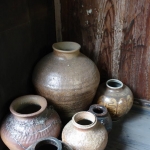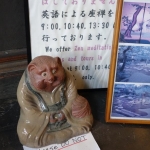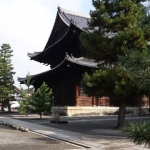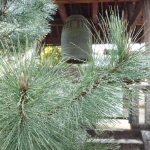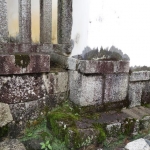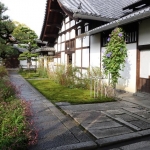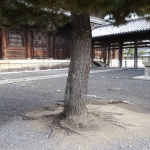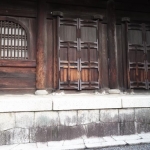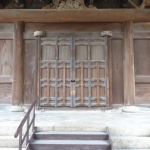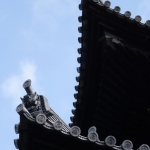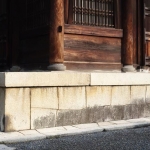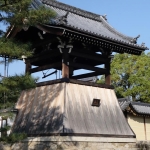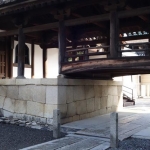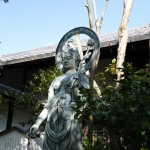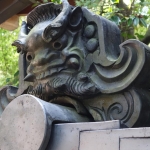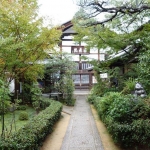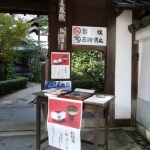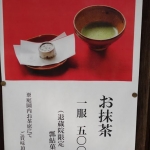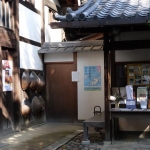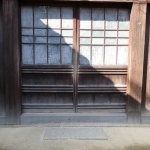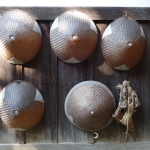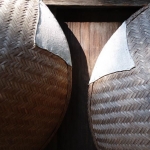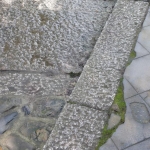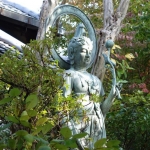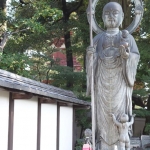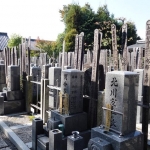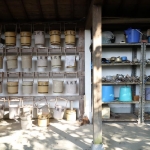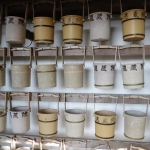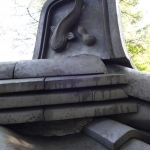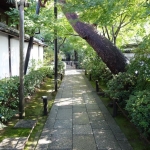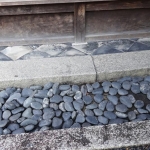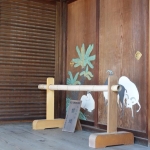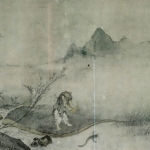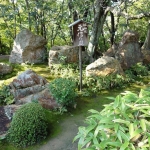Myoshin-ji Temple Complex
One old man sits zazen
in the corner of the temple
on this spring night
–Bashō
Red: Places of Interest Blue: Eat Green: Sleep
I so enjoyed my two visits to this complex of temples. I arrived early and enjoyed wandering most of one day, visiting various temple gardens open to the public. I returned for another day and a temple overnight (shukobo) at Shukoin. It was a perfect place from which to explore important temples and gardens nearby.
This is the head temple of the associated branch of Rinzai Zen Buddhism. The Myōshin-ji school is by far the largest school in Rinzai Zen, approximately as big as the other thirteen branches combined: it contains within it about 3,500 temples throughout Japan, together with a handful overseas, of the approximately six thousand total Rinzai temples, and also has nineteen associated monasteries, of the total of forty monasteries and one nunnery
The grounds of the temple were formally a palace for the Emperor Hanazono. Hanazono abdicated in 1318 and took the tonsure (became a monk) in 1335, and in 1342 donated the palace to found the temple; the district and many places in the area are named “Hanazono” in his honor. The head temple was founded in 1342 by the Zen master Kanzan Egen (1277–1360), third patriarch in the influential Ōtōkan lineage.
Nearly all of the buildings were destroyed in the Ōnin War in 1467. However, many of them have been rebuilt, initially under the leadership of Sekko-Soshin Zenji (1408–1486), the sixth patriarch. The present buildings were primarily built during the following 150 years (late 15th through early 17th century), and today the gardens of Myōshin-ji are a nationally designated Place of Scenic Beauty and Historic Site.
The temple’s bell, known as Okikicho, is the oldest-known example of a Buddhist bonshō (“temple bell”) in Japan, as well as being the oldest bell in the world still in use. It was cast in 698.
A difference between this and other schools of Rinzai Zen is that the Myōshin-ji school does not necessarily follow the set of established kōan for the sake of testing one’s stage of enlightenment. Rather the Myōshin-ji school allows the master to specifically tailor kōan to a student’s needs and background. This method diverges from the traditionally accepted canon of kōan.
The complex is quite sprawling, and features a number of winding paths flanked by high walls, so it is easy to become disoriented. As is usual in Japanese temple construction, the main buildings are located on the axis from the south gate, in the south-west quadrant of the complex. There is a main north–south path connecting the north gate and the south gate, starting parallel to the main buildings, then continuing north, flanked by veering slight, and ending at the north gate. There is also an east–west path leading east from the main buildings (starting in the west at Tenju-in, passing between the hattō and butsuden, then ending in the east, after a curve, at Tōrin-in). In addition to the direct north–south path, there is a longer path that proceeds east from the north gate, winds past Keishun-in, then terminates in the east–west just south of Daishin-in. In addition to these main routes, there are a number of side paths. These paths are all lined with sub-temples, generally with a single entrance.


